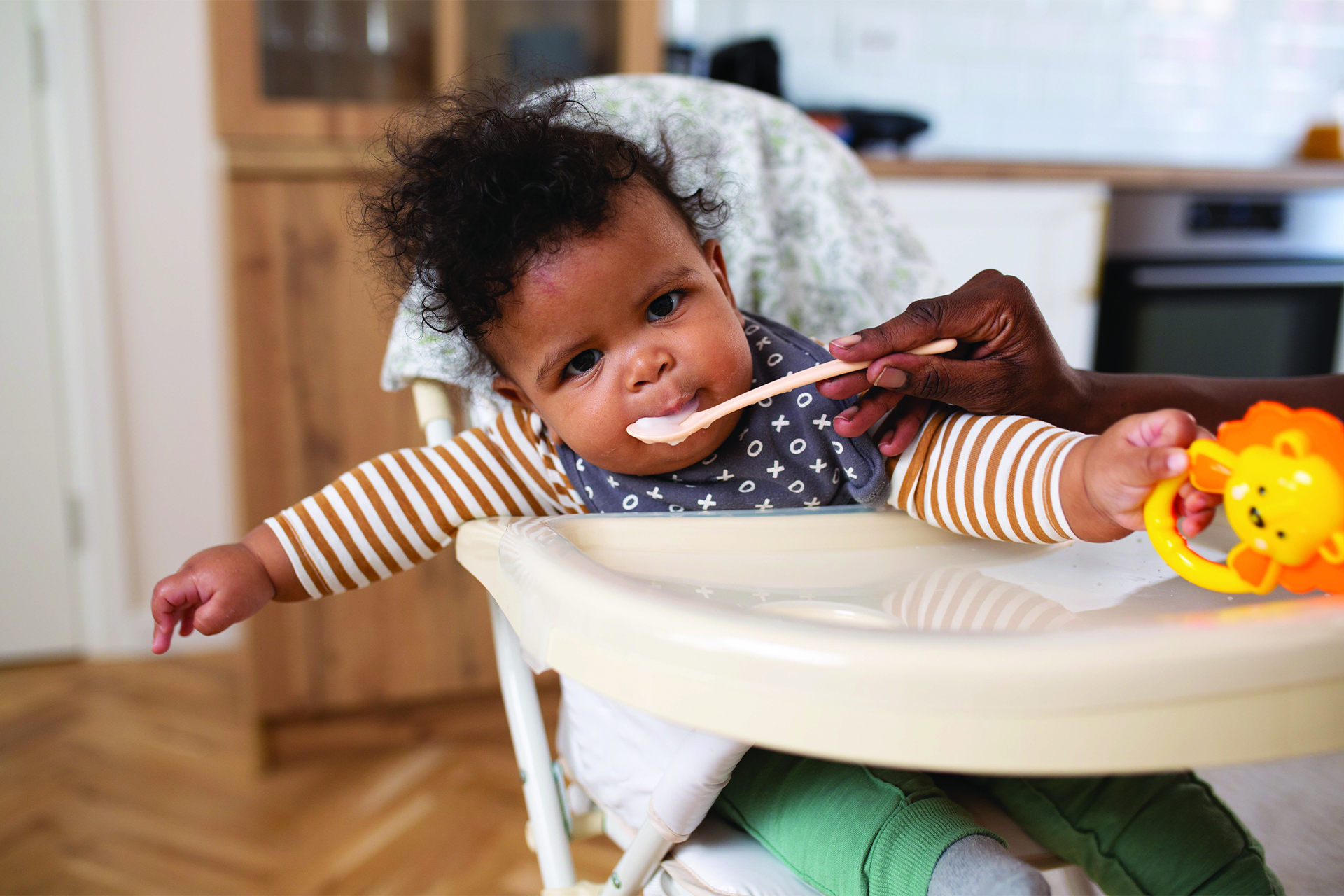
Preguntas y respuestas: Cómo empezar con los alimentos sólidos de forma segura
- Home
- Live Well Blog
- Preguntas y respuestas: Cómo empezar con los alimentos sólidos de forma segura
¿Cómo sabré cuándo mi bebé está listo para empezar a comer alimentos sólidos?
Tu bebé está listo para comer alimentos sólidos cuando puede sostener la cabeza erguida y sentarse con apoyo, y muestra interés en tus comidas. La American Academy of Pediatrics (AAP) sugiere que se les empiece a dar alimentos sólidos a los bebés alrededor de los 6 meses de edad.
¿Cuánta comida debo darle a mi bebé?
Puede que tu bebé solo pruebe un bocado al principio; la cantidad que coma aumentará gradualmente. Recuerda que tu bebé decide cuánto comer: no lo fuerces a terminar el bol o el plato.
¿Debería seguir amamantando a mi bebé cuando empiece a comer alimentos sólidos?
¡Sí! La AAP recomienda la lactancia materna durante un año o más. Tu bebé seguirá obteniendo la mayoría de las calorías de la leche humana (o de la fórmula). Dado que podría llenarse con leche, ofrécele el alimento sólido antes de amamantarlo.
¿Cuál es un buen primer alimento para que mi bebé pruebe?
Empieza con alimentos ricos en hierro, como carnes trituradas y cereales fortificados con hierro.
¿Cómo sé si mi bebé está lleno?
Observa si tu bebé se aparta, cierra la boca o se inclina hacia atrás. Un bebé más grande podría alejar la comida o empezar a jugar con ella.
El hijo de mi amiga tiene alergias a los alimentos. ¿Cómo me aseguro de que mi bebé no las tenga?
Dale a tu bebé un alimento a la vez.
Espera algunos días antes de darle un alimento nuevo para detectar cualquier signo de alergia. Si mezclas los alimentos, quizá no puedas descubrir cuál está causando la alergia. Las investigaciones demuestran que continuar con la lactancia al tiempo que le empiezas a dar alimentos con gluten puede reducir el riesgo de que tu bebé desarrolle intolerancia al gluten (también llamada enfermedad celíaca).
El gluten es una proteína que contienen
el trigo, la cebada y el centeno.
Asegúrate de compartir estos consejos con cualquier persona que ayude a cuidar de tu bebé.